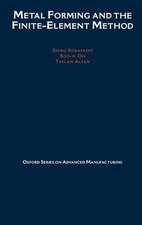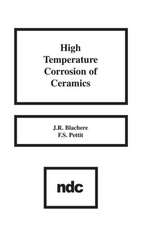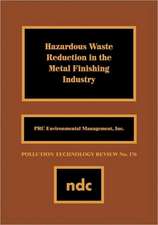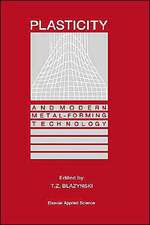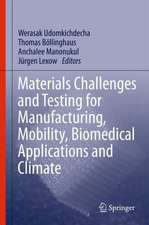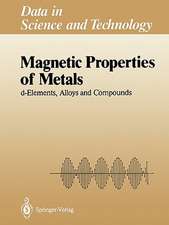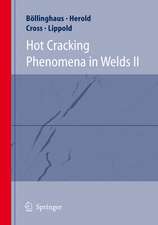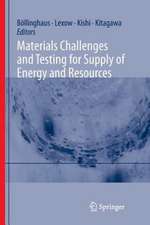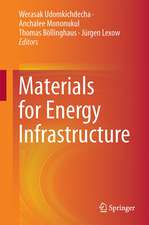Hot Cracking Phenomena in Welds
Editat de Thomas Böllinghaus, Horst Herolden Limba Engleză Hardback – 8 mar 2005
| Toate formatele și edițiile | Preț | Express |
|---|---|---|
| Paperback (1) | 949.73 lei 6-8 săpt. | |
| Springer Berlin, Heidelberg – 13 oct 2010 | 949.73 lei 6-8 săpt. | |
| Hardback (1) | 954.93 lei 6-8 săpt. | |
| Springer Berlin, Heidelberg – 8 mar 2005 | 954.93 lei 6-8 săpt. |
Preț: 954.93 lei
Preț vechi: 1164.56 lei
-18% Nou
Puncte Express: 1432
Preț estimativ în valută:
182.75€ • 190.09$ • 150.87£
182.75€ • 190.09$ • 150.87£
Carte tipărită la comandă
Livrare economică 14-28 aprilie
Preluare comenzi: 021 569.72.76
Specificații
ISBN-13: 9783540223320
ISBN-10: 3540223320
Pagini: 350
Ilustrații: X, 394 p.
Dimensiuni: 155 x 235 x 29 mm
Greutate: 0.72 kg
Ediția:2005
Editura: Springer Berlin, Heidelberg
Colecția Springer
Locul publicării:Berlin, Heidelberg, Germany
ISBN-10: 3540223320
Pagini: 350
Ilustrații: X, 394 p.
Dimensiuni: 155 x 235 x 29 mm
Greutate: 0.72 kg
Ediția:2005
Editura: Springer Berlin, Heidelberg
Colecția Springer
Locul publicării:Berlin, Heidelberg, Germany
Public țintă
ResearchCuprins
Phenomena and Mechanisms.- On the Origin of Weld Solidification Cracking.- New Insight into the Mechanism of Ductility-Dip Cracking in Ni-base Weld Metals.- Influence of Welding Speed on the Hot Cracking Resistance of the Nickel-Base Alloy NiCr25FeAlY During TIG-Welding.- The Role of Segregation of Oxygen in Welding Alloys of the INVAR Type.- Character of Hot Crack Formation During Welding of Cast Heat-Resistant Nickel Alloys.- Contribution to HAZ Liquation Cracking of Austenitic Stainless Steels.- Morphology of Hot Cracks in Single-Phase Weld Metal.- Metallurgy and Materials.- The Effect of Silicon and Iron on the Weldability of Ni-Co-Cr-Si HR-160® Alloy.- The Influence of Different Nb-Contents on the Hot Cracking Susceptibility of Ni-Base Weld Metals Type 70/20.- Hot Cracks as Stress Corrosion Cracking Initiation Sites in Laser Welded Corrosion Resistant Alloys.- Modeling and Simulation.- Simulating and Predicting Weld Solidification Cracks.- Integrated Mechanical-Metallurgical Approach to Modeling of Solidification Cracking in Welds.- Influence of the Weld Pool Geometry on Solidification Crack Formation.- Testing and Standardization.- Recent Developments in Weldability Testing.- Hot Cracking Tests — The Route to International Standardization.- Value of Different Hot Cracking Tests for the Manufacturer of Filler Metals.- Influence of the Deformation Rate of Different Tests on Hot Cracking Formation.- Testing for Susceptibility to Hot Cracking on Gleeble™ Physical Simulator.- Scientific Bases of the International Standardization Project "Hot Cracking Tests for Welds".- Discussion and Evaluation of Some Extraordinary Cases of Hot Cracking.
Textul de pe ultima copertă
Although the avoidance of hot cracking still represents a major topic in modern fabrication welding components, the phenomena have not yet been fully understood. Through the 20 individual contributions from experts all over the world the present state of knowledge about hot cracking during welding is defined, and the subject is approached from four different viewpoints. The first chapter provides an overview of the various hot cracking phenomena. Different mechanisms of solidification cracking proposed in the past decades are summarized and new insight is particularly given into the mechanism of ductility dip cracking. The effects of different alloying elements on the hot cracking resistance of various materials are shown in the second chapter and, as a special metallurgical effect, the initiation of stress corrosion cracking at hot cracks has been highlighted. The third chapter outlines how numerical analyses and other modelling techniques can be utilized to describe hot cracking phenomena and how such results might contribute to the explanation of the mechanisms. Various hot cracking test procedures are presented in the final chapter with a special emphasis on standardization. For the engineering and natural scientists in research and development the book provides both, new insight and a comprehensive overview of hot cracking phenomena in welds. The contributions additionally give numerous individual solutions and helpful advice for international welding engineers to avoid hot cracking in practice. Furthermore, it represents a very helpful tool for upper level metallurgical and mechanical engineering students.
Caracteristici
Reports the state of the art of this important topic of applied materials science Includes supplementary material: sn.pub/extras

